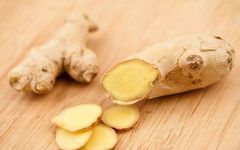Ginger is an essential seasoning in daily life and has significant medicinal value. Ginger is warm in nature, pungent in flavor, and has the effects of releasing the exterior, dispelling cold, stopping vomiting, and detoxifying. Another traditional Chinese medicine (TCM) herb is “Dried Ginger” (Gan Jiang), which many people mistakenly believe is simply dried ginger. However, this is not the case.
Ginger (Sheng Jiang) is the fresh rhizome of the ginger plant (Zingiber officinale). It is harvested in autumn and winter, with the fibrous roots and soil removed.
【Properties and Meridians】 Pungent, slightly warm. Enters the Lung, Spleen, and Stomach meridians.
【Functions and Indications】 Releases the exterior and disperses cold, warms the middle and stops vomiting, transforms phlegm and stops cough, detoxifies fish and crab poisoning. Used for wind-cold colds, cold stomach vomiting, cold phlegm cough, and fish or crab poisoning.
【Dosage】 3-10g.
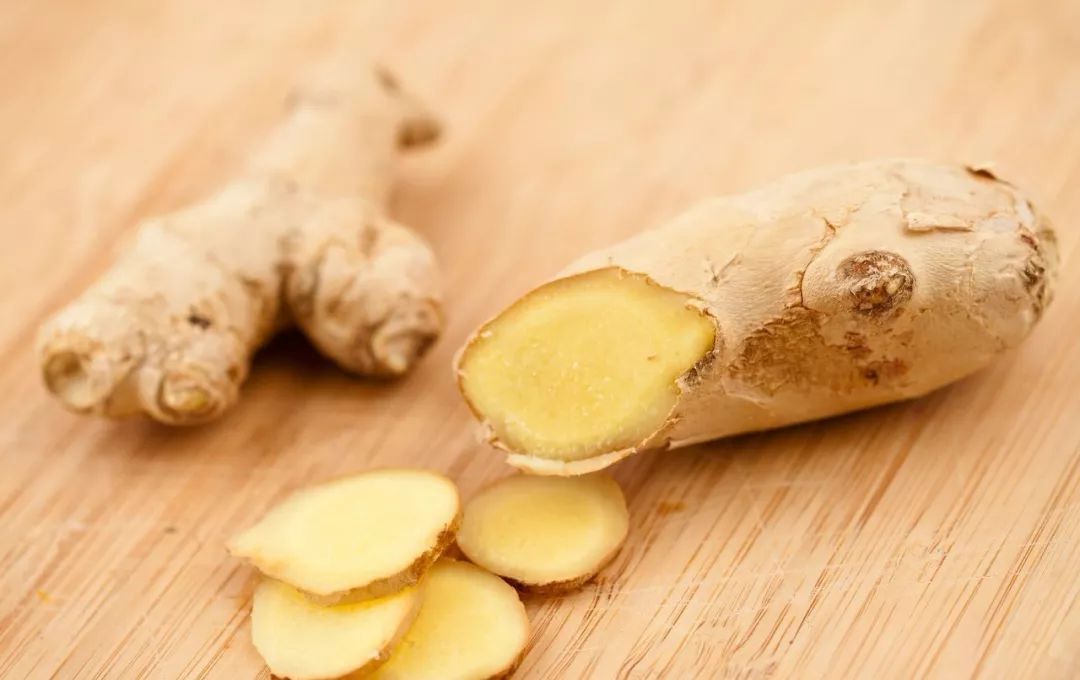
Dried Ginger (Gan Jiang) is the dried rhizome of the ginger plant. It is harvested in winter when the stems and leaves of the ginger wither, with the fibrous roots and soil removed, then dried in the sun or at low temperatures. Freshly sliced and dried ginger is referred to as Dried Ginger Slices (Gan Jiang Pian).
【Properties and Meridians】 Pungent, hot. Enters the Spleen, Stomach, Kidney, Heart, and Lung meridians.
【Functions and Indications】 Warms the middle and disperses cold, restores yang and opens the meridians, warms the lungs and transforms fluids. Used for cold pain in the abdomen, vomiting and diarrhea, cold limbs with weak pulse, and cough due to cold phlegm.
【Dosage】 3-10g.
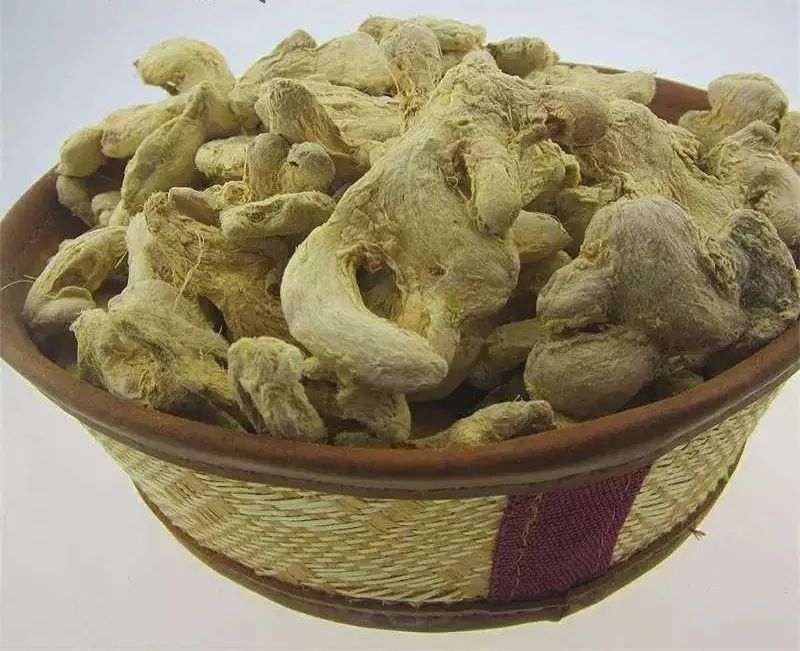
The different cultivation methods result in different properties and effects of ginger and dried ginger.
During the cultivation of ginger, it is necessary to mound soil around it frequently, as it is a rhizome that has phototropism. The more it is buried, the more it grows upwards to obtain sunlight. This results in larger and more tender ginger, which is what we find in the market. Fresh ginger is usually large, with little fiber, and very tender and crisp, but shrinks when dried.
In contrast, dried ginger is not mounded during cultivation, resulting in smaller rhizomes with more concentrated internal components, making it denser. Even when dried in the sun, it does not shrink much. There is also a distinction between mother and son ginger. Traditionally, authentic dried ginger should be processed from the mother ginger (Mu Jiang) from regions like Sichuan and Guizhou.
The main difference in efficacy between ginger and dried ginger is that ginger is used for dispersing wind-cold exterior conditions, while dried ginger is not used for this purpose but is primarily for treating interior conditions of yang deficiency.Ginger disperses wind-cold, warms the middle and stops vomiting, warms the lungs and stops cough, and detoxifies fish and crab poisoning; dried ginger warms the interior, disperses cold, restores yang, and warms the lungs.
Additionally, dried ginger can be processed into another TCM herb—Processed Ginger (Pao Jiang).
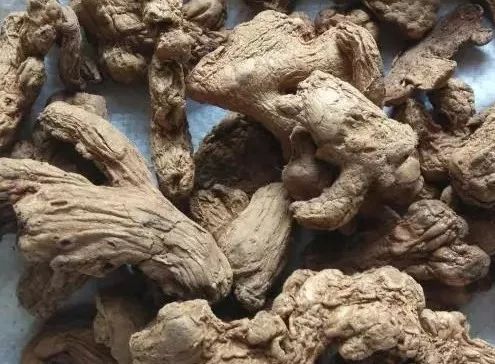
Processed Ginger (Pao Jiang) is the processed product of dried ginger. It is made by taking dried ginger pieces and stir-frying them in a pot over high heat until they puff up, with the outer skin turning a charred yellow and the inside yellow. A small amount of water is sprayed, then removed and dried.
【Properties and Meridians】 Pungent, hot. Enters the Spleen, Stomach, and Kidney meridians.
【Functions and Indications】 Warms the meridians and stops bleeding, warms the middle and stops pain. Used for yang deficiency with bleeding, vomiting blood, and abdominal pain with diarrhea.
【Dosage】 3-9g.
In summary, ginger, dried ginger, and processed ginger are all derived from the same plant and can warm the middle and disperse cold, suitable for cold conditions of the Spleen and Stomach. However, due to the differences in quality between fresh and dried ginger and their processing, their properties vary. Ginger is better for dispersing exterior cold and is considered a sacred herb for vomiting; dried ginger is more focused on dispelling interior cold and is a warming herb; processed ginger is effective in moving blood and warming the meridians to stop bleeding. Therefore, it is important to distinguish between ginger, dried ginger, and processed ginger to achieve the best therapeutic effects.
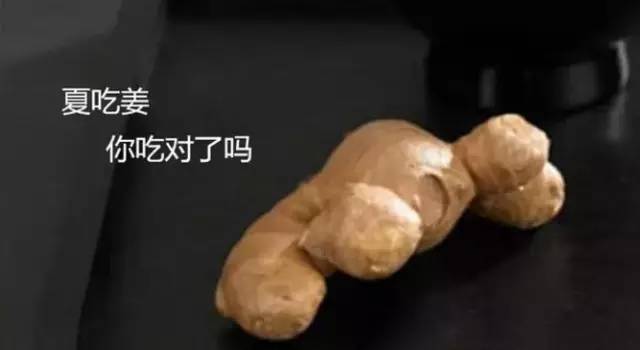
In summer, ginger can also play a role in treating winter diseases in summer. However, many people are confused about whether to use fresh ginger or dried ginger in summer.
“Eat radishes in winter and ginger in summer; no need for a doctor’s prescription.” This is a summary of ancient wisdom and a principle of health preservation that follows the seasons.Due to the heat and humidity of summer, it is easy to catch a chill, and the body is prone to accept cold and damp substances, leading to heavy cold and dampness in the body!Many people may experience symptoms such as drowsiness, insomnia, depression, and reduced speech due to the invasion of cold and dampness. In this case, consuming ginger can help regulate the body, and it is best to choose the milder dried ginger. (Fresh ginger is a strong heat source, like a fierce fire; dried ginger is milder, like charcoal fire.)
For office workers and middle-aged and elderly people who often feel drowsy in summer, they can buy some dried ginger slices to brew,which can invigorate the spirit, warm the stomach, strengthen the spleen, and aid digestion, which is very beneficial for adjusting sub-health conditions. In summer, excessive consumption of cold foods requires the spleen to provide a lot of heat for digestion!If the internal organs such as the spleen and stomach are chilled, the fluids cannot circulate, so dried ginger is needed to warm the middle jiao.
– END –
Editor: Yang Qiujie

Copyright Statement: This public account is purely for public welfare. We emphasize sharing, and some articles and images come from the internet, with copyright belonging to the original authors. If there are any objections, please inform us, and we will delete them in a timely manner.
Issue No. 107
Please stay tuned


